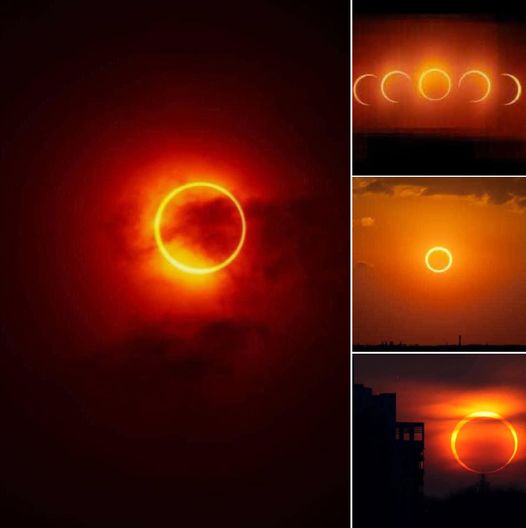Two astronomical phenomena will converge in the sky: the Devil’s Comet and a Solar Eclipse, thus offering a unique and overwhelming experience to those who direct their gaze towards the sky.
Comet Diablo, also known as 12P/Pons-Brooks, emerges from the depths of space in a visit that occurs only every few decades. This cosmic nomad, with its particularly unusual trajectory, will not be visible again until the distant year 2095.
During the Great Solar Eclipse on April 8, your celestial dance will reach a climax. This comet, scientifically named 12P/Pons-Brooks, will reach its perihelion, the closest point to the Sun, on April 21, surprisingly coinciding with the occurrence of a solar eclipse in some regions of the northern hemisphere.
During the solar eclipse, the sky will be tinted with tones of mystery and wonder, offering a unique opportunity to spot Comet Diablo, which will be just 25 degrees from the solar disk.
What are the conditions to be able to observe it?
To observe both celestial phenomena simultaneously, optimal conditions will be required, such as clear, clear skies, and the use of appropriate observing equipment. Although the comet may be visible to the naked eye, using binoculars or telescopes will enhance the viewing experience.
Its way:
Comet Diablo, whose evocative name is inspired by the appearance of two “horns” formed by the presence of ice and gas in its tail, has a fascinating history.
First discovered by Alexis Bouvard and Heinrich Wilhelm Olbers in 1812, and rediscovered by Jean-Louis Pons in 1851. Explains how this cosmic traveler completes its orbit around the Sun approximately every 71 years.
With a nucleus about 30 kilometers in diameter, the comet is surrounded by a diffuse nebula of gas and dust, projecting a tail that extends for millions of kilometers.
How will it be seen in Mexico?
Continue Reading in next page

